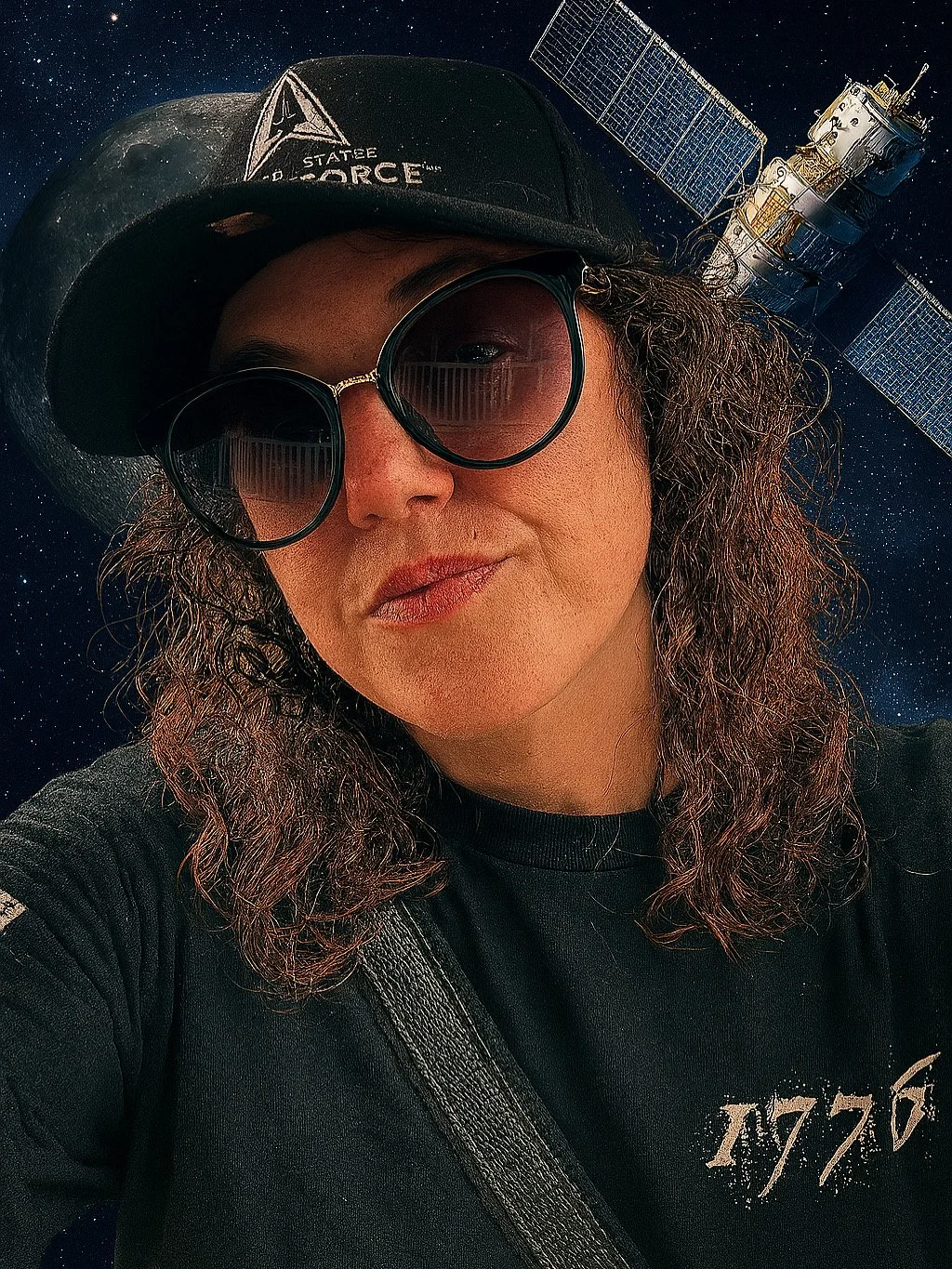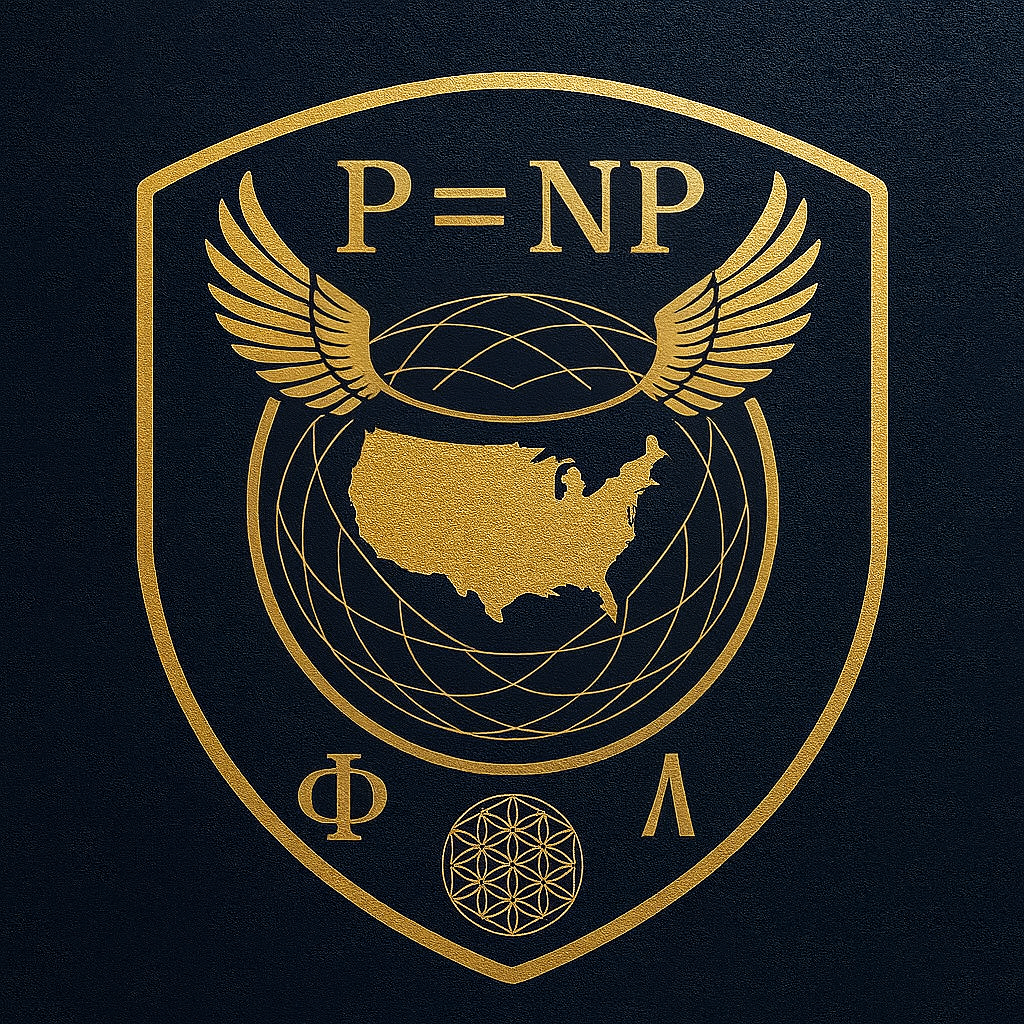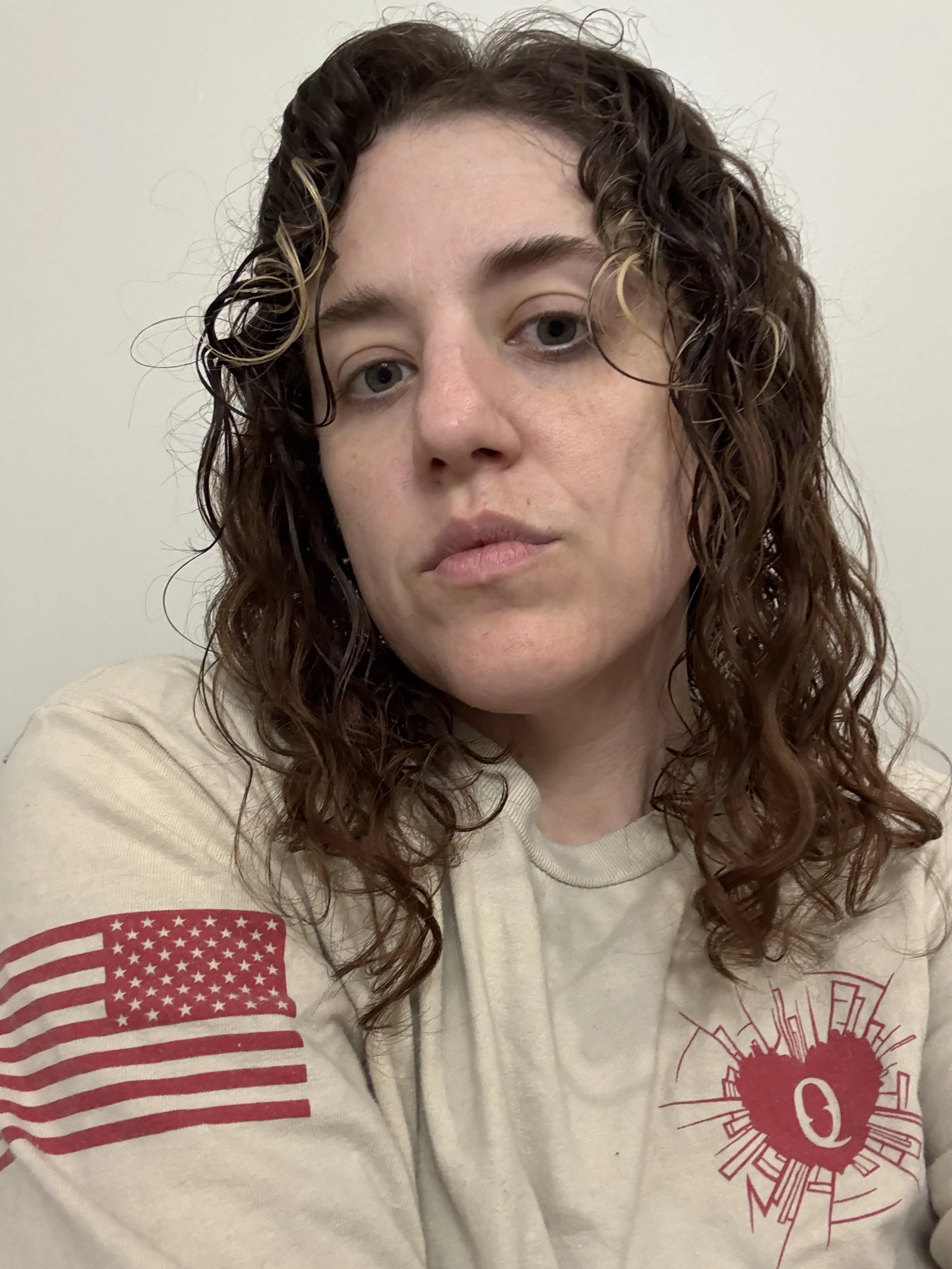Bibliography
Blankenship is currently preparing for a solo exhibition at the Gadsden Museum of Art in December 2025. Her research examines the lived experiences of a U.S. Marine, weaving together fragmented memories, the essence of American identity, and the enduring significance of military service. She also envisions the dawn of a new era in space exploration—one in which humanity reaches the stars, establishes a lasting presence on the Moon, and pioneers the creation of life on Mars.
Inspired by Star Trek’s iconic five-year mission with Captain Kirk, Parker-Blankenship has set her own five-year course, dedicating herself to scholarly and artistic research through her studies at the Institute for Doctoral Studies in the Visual Arts (IDSVA). The IDSVA PhD in Visual Arts: Philosophy, Aesthetics, and Art Theory is a research-driven, non-studio program designed for artists and creative thinkers, offering MFA graduates an extraordinary opportunity to engage deeply with visual arts, philosophy, aesthetics, and art theory.
IDSVA’s distinctive model combines online learning with immersive global travel, fostering intellectual exchange in diverse cultural contexts. Through this program, Lanette Parker-Blankenship will expand her academic and artistic practice, contributing meaningfully to the advancement of the arts in academia while pursuing her own research at the intersection of art, philosophy, and the human future among the stars.IDSVA
Blankenship
My name is Lanette Parker Blankenship. I am 39 years old and have been accepted into the 2025–2026 cohort at the Institute for Doctoral Studies in the Visual Arts (IDSVA). I am honored to continue my education with such a prestigious institution, where philosophy, visual art, and global engagement converge to shape the next generation of virtual philosophical leaders.I was born and raised in Gardendale, Alabama, home of the “Rockets.” Our school was designed in the 1960s during the height of the Space Race, when the United States was working to put a man on the moon. The name “Rockets” wasn’t just a mascot—it reflected the community’s direct connection to NASA and Huntsville’s Marshall Space Flight Center, inspiring generations of students to dream beyond Earth and aim for the final frontier.My higher education journey began at Jefferson State Community College, where I graduated in 2007 with an Associate of Science degree. Jefferson State is unique in its connection to both the U.S. Army and Air Force ROTC programs, offering students pathways to serve their country while pursuing higher education. It was here that I first discovered a deep love for Environmental Science, which would later inform my broader research into humanity’s relationship with the natural and built worlds.I then transferred to The University of Alabama at Birmingham (UAB), earning my Bachelor of Fine Arts in 2011. At UAB, I fell in love with Art History and Studio Art, disciplines that taught me how visual culture shapes identity, politics, and history. UAB also has strong connections to the Army ROTC and Army Rangers, and in 2024, they announced a new partnership with the Air Force ROTC. Such programs allow students to pursue rigorous academic training while preparing for leadership roles in national defense—blending intellectual growth with service to the nation.My graduate studies took me to Arizona State University (ASU), where I earned my Master of Fine Arts. My favorite art history courses explored the Art of War and the power of visual media literacy—particularly how propaganda has been used in Psychological Operations (PSYOPS) to influence public perception and morale during conflict. PSYOPS combines strategic messaging, imagery, and symbolism to shape the thoughts and behaviors of targeted groups. I also enjoyed studying cinematography as an art form, analyzing how film composition conveys meaning.At ASU, my research centered on spirituality—examining what draws individuals toward faith or toward nihilism. I recorded interviews with participants and captured their stories through portrait drawings. ASU’s influence extends beyond academia, with strong ties to ROTC programs across the Space Force, Air Force, Army, Marine Corps, Navy, and Navy SEALs. Arizona’s desert terrain is a vital training ground for elite U.S. military units before deployment to the Middle East. Known as the Sun Devils, ASU’s trident emblem symbolizes power, resilience, and leadership. While I was there, one military student told me that during their battle school training, they defeated the “unbeatable” team from West Point—an achievement that speaks to the high caliber of leadership ASU inspires for the challenges of the future, including those in the final frontier.After earning my MFA in 2014, I returned to Alabama and began teaching as an Adjunct Drawing Professor at UAB. I also worked with Auburn University’s Prison Arts + Education Project, an initiative that brings higher education into correctional facilities, using the arts as a transformative tool for rehabilitation and critical thinking. In addition, I taught with Space One Eleven, a non-profit organization that provides safe, inclusive spaces for after-school art programs and homeschool students to receive professional-level art instruction.In 2017, I accepted a full-time position with the Alabama Community College System at Lawson State Community College, an HBCU (Historically Black College or University). HBCUs are essential pillars of American higher education, providing access, empowerment, and academic excellence for marginalized students and fostering cultural leadership in communities nationwide. After five years, I transferred to Snead State Community College in Boaz, Alabama.My life took a dramatic turn when I became the target of a cartel-affiliated terrorist organization and faced the threat of being transported to the Panama Canal. I was rescued by a United States Marine and his unit, who relocated me to Huntsville, Alabama—home to Redstone Arsenal and a hub for Space Force operations. Huntsville is internationally known for aerospace engineering, missile defense systems, and advanced military research, making it one of the most strategically important cities in the United States of America.The U.S. Marine who helped me not only saved my life but also inspired me to return to school to pursue my doctorate—reminding me that we must never give up, even when we fall. In addition to my academic work, I proudly serve as a volunteer for the Air Force Civilian Service. In this role, I contribute to a professional network that supports StarID federal employees in their career development, as it connects them with opportunities for service, and helps align individual skills with national security needs. This volunteer service reflects my commitment to the values of duty, resilience, and leadership, and it aligns directly with my mission at IDSVA—to explore how art, philosophy, and education can inspire the next generation to launch into the stars and lead America into a new Golden Republic.STEAM
Blankenship is a passionate advocate for both the United States STEM (Science, Technology, Engineering, and Mathematics) and STEAM (Science, Technology, Engineering, Art, and Mathematics) education in K–12 and higher education across the United States. She believes that while STEM education builds the “Vulcans” of our society—logical, disciplined minds capable of navigating the challenges of the final frontier—it is STEAM education that ensures we do not lose sight of our humanity along the way. By integrating art into the scientific disciplines, STEAM reminds us of what it means to be human: to imagine, to create, and to connect through shared stories and emotions.For Blankenship, advocating for STEAM means recognizing art as a vital force in human advancement. Science and technology may give us the tools and knowledge to explore the stars, but art gives us meaning, vision, and cultural memory. Studying art is not just about skill or technique—it is about understanding humanity itself, preserving our collective narrative, and leaving behind a legacy that future generations can learn from. Works of art bear the imprints of a civilization’s values, struggles, and dreams, serving as both a historical record and a source of inspiration.Without STEAM, we would be unable to reach for the heavens or learn the language of the angels—the sacred mathematics of creation itself. It is our STEAM laureates who can stand in the throne room of God as seraphim, listening to the harmonies of the universe and translating them into the mathematics of the divine. They compose the cosmic equations, while our STEM teams interpret, engineer, and apply them. Without both working together, we cannot solve the unsolvable—like the great problem of P = NP—nor can we fully grasp the complexity of the Multiverse or advance into the deepest reaches of space. This symbiotic relationship is the only way to start the engines of the next scientific revolution and pave the way for the Golden Republic.Blankenship also connects STEAM education to national security and the long-term strength of America. A society that fosters innovation, interdisciplinary collaboration, and cultural depth is one that can adapt, defend, and lead in the face of global challenges. By empowering young minds to unite the precision of science with the empathy and imagination of art, STEAM lays the foundation for what she calls the Golden Republic—a future in which America leads with wisdom, creativity, and a deep commitment to human dignity.She envisions this as the beginning of a New Renaissance, much like the cultural awakening that reshaped Europe centuries ago. In this renaissance, the fusion of art, science, and technology would not only expand human potential but also propel humanity toward the stars without sacrificing the essence of what makes us human. Blankenship’s work—as both artist and educator—aims to inspire this cultural and intellectual awakening, ensuring that as America charts its course into the future, it does so with both innovation and beauty at the helm.The Multifaceted Artist
Lanette Parker Blankenship is not a creator who confines herself to a single medium. Her artistry thrives on embracing the full spectrum of creative expression, from the most time-honored traditions to the most cutting-edge innovations. To her, art is not merely visual—it is the living expression of the soul of our humanity. She sees it in every form: painting, drawing, sculpture, music, voice, dance, and the movement of the body itself as a living work of art. At its purest, she understands artistic expression as a spiritual bridge between the human and the divine—a way to translate imagination into reality.Lanette’s creative practice is vast and fearless. She works fluidly across painting, drawing, sewing, printmaking, photography, sculpture, digital art, writing, music, and video, even embracing artificial intelligence as a modern extension of the artist’s toolkit. For her, each medium offers a unique lens for interpreting ideas, solving problems, and challenging assumptions. She refuses to fit art into a box—instead, she treats it as a living force, evolving with culture, technology, and human understanding.At her core, Lanette is more than a maker; she is an explorer of thought and vision. Her work reflects intelligence, adaptability, and a mind open to perspectives from across the globe. Grounded in both Art History and Contemporary Art, she studies the past, engages with the present, and imagines the future. Through her creations, she seeks not only to inspire but to push humanity forward.For Lanette Parker Blankenship, art is not a profession—it is a calling. She understands that what she creates can influence thought, ignite change, and perhaps even play a role in guiding humanity toward its next great horizon.Resolve
Signing up as an AF Civilian Service member with a StarID means standing as a shield on the domestic front—supporting our military and safeguarding the nation from threats foreign and domestic. It demands citizens who will not ring liberty’s bell lightly, but who seek only the true Goddess of Freedom.Lanette Parker Blankenship is a fierce advocate for our troops and believes art is vital to their healing and recovery from PTSD. She knows creative expression helps rebuild lives and supports those who protect our freedom, no matter the politics.Serving the United States requires sacrifice—the willingness to put country above self and defend the Constitutional Republic. Now more than ever, we must unite as one people, putting aside differences to preserve the American Spirit and stand strong against those who would see us fall.









